General purpose audio transformers
Applications:
•Splitting
•Galvanic isolation
•Balanced-unbalanced conversion
Properties:
Flexible, with many different connection alternatives possible
Moderate copper resistance (50 Ω per section typically)
Medium signal level capability (Max 10 dBU at 50 Hz per section typically)
Excellent magnetic and electrostatic shielding
High mu cores (mu metal or amorphous strip core)
Discussion:
General purpose audio isolation transformers, as far as
impedance is concerned, can be considered as hybrids between input transformers and output transformer. Input transformers are used at dedicated input situations and should present a very high impedance to the source. They should also accept high line level signals.
Output transformers are used to drive long cable length and should combine low copper resistance with high signal level capability. General purpose transformers are often used in applications which are not clearly input OR output, and where dedicated input or output transformers are less well suited.
The most obvious applications for 1:1 general purpose transformers are audio ground isolation and balanced-to-unbalanced conversion. This type of general purpose transformer is also used for audio splitting 1 direct + 1 isolated.
For successfully splitting 1 direct + 2 isolated, 1 direct + 3 isolated, and for MS encoding/decoding, a more complex internal winding structure is required, with separated Faraday shields and with transformer housing and core galvanically separated. Because splitting transformers are also in-between impedance-wise they belong to the general purpose transformer category.
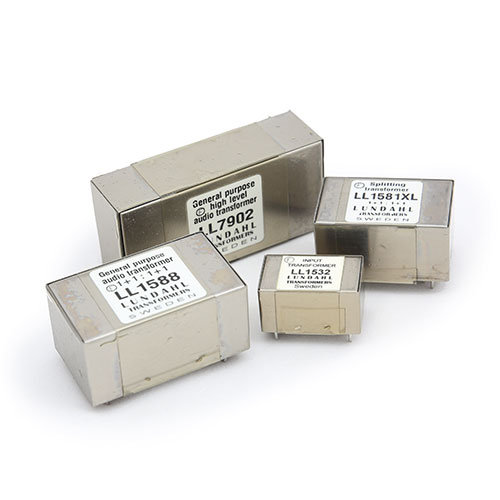
Isolation transformers
| Photo | Type | Turns Ratio | Size LxWxH | Max Primlevel | Applications / Comments |
|---|---|---|---|---|---|
 | LL1527 | 1+1 : 1+1 | 38x24x17 | +16 dBU | The "standard" problem solver. Ground isolation, MS decoding, splitting 1 direct + 1 isolated outputs. Mic input 200:800 Ω. |
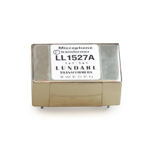 | LL1527A | 1+1 : 1+1 | 38x24x17 | +16 dBU | As LL 1527. Secondary shields available individually on connector pins. |
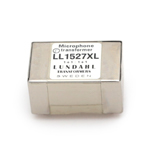 | LL1527XL | 1+1 :1+1 | 38x24x20.5 | +19 dBU | As LL1527, but with + 3 dB level capability compared to the LL1527. |
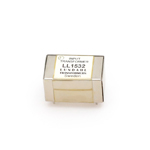 | LL1532 | 1+1 : 2 | 28x17x15 | +10 dBU | A small size audio transformer. For isolation and microphone input (200:800 Ω). |
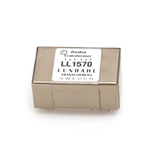 | LL1570 | 1+1 : 1+1 | 38x24x17 | +16 dBU | Splitting 1 direct + 1 isolated outputs. Extra wide bandwidth. Microphone input (200 : 800 Ω). |
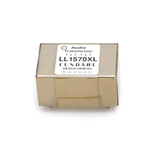 | LL1570XL | 1+1 : 1+1 | 38x24x20.5 | +19 dBU | As LL1570, but with + 3 dB level capability compared to the LL1570. |
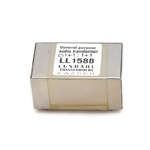 | LL1588 | 1+1 : 1+1 | 47x28x24 | +28 dBU | High level isolation applications 1:2 microphone input. Phase splitting. |
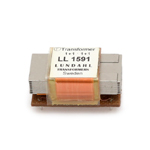 | LL1591 | 1+1 : 1+1 | 37x22x17 | +16 dBU | ”Naked” LL1527 -> no Faraday shields and no mu metal housing. Not for demanding applications. |
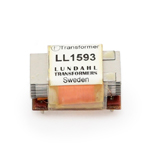 | LL1593 | 1+1 : 2 | 28x17x14 | +12 dBU | ”Naked” LL1532 -> no Faraday shields and no mu metal housing. Not for demanding applications. |
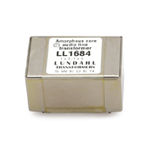 | LL1684 | 1+1 : 1+1 | 42x28x22 | +25 dBU | Amorphous core version of LL1588. High level isolation applications 1:2 microphone input. Phase splitting. |
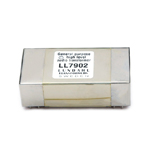 | LL7902 | 1+1+1+1 :1+1+1+1 | 66x32x21 | +28 dBU | High level high quality general purpose transformer for very demanding applications. "When only the best is good enough". |
Splitting transformers
| Photo | Type | Turn Ratio | Size LxWxH | Max Primlevel | Applications / Comments |
|---|---|---|---|---|---|
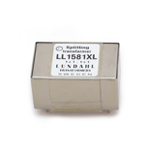 | LL1581XL | 1+1 : 1+1 | 38x24x20.5 | +13 dBU (Prim. in parallel) | Splitting 1 direct + 2 isolated outputs. Very high immunity to external magnetic fields and to large ground differences. |
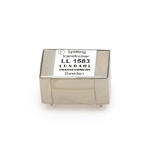 | LL1583 | 1 : 1+1 | 28x17x15 | +8 dBU | Splitting 1 direct + 2 isolated outputs. Small size mic. level transformer with the same excellent noise immunity as the LL1581XL. |
 | LL1590 | 1 : 1+1+1 | 47x28x23 | +13 dBU | Splitting1 direct + 3 isolated outputs. |
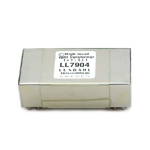 | LL7904 | 1+1: 1+1 | 66x32x21 | +23dBU (Prim. in parallel) | Very high level splitting transformer for 1 direct + 2 isolated outputs. Very high immunity to external magnetic fields and to large ground differences. |
Complete DIN units
Pre-assembled units with screw terminals, ready to install| Photo | Type | Applications / Comments |
|---|---|---|
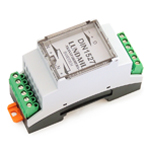 | DIN1527 | Provides galvanic isolation and splitting 1 direct + 1 isolated. It is suitable for low-to-medium signal levels. |
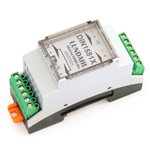 | DIN1581XL | Provides galvanic isolation and splitting 1 direct + 1 isolated. It is suitable for medium-to-high signal levels. |
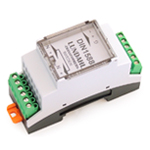 | DIN1588 | Is intended for splitting 1 direct + 2 isolated. It is suitable for mic and line level signals up to +13 dBU. |

